IN THIS POST:
– About Cholistan Desert
– Local Culture
– How to Reach the Cholistan Desert?
– Places to Visit
– Things to Do
Known to the locals as Rohi, the Cholistan Desert is located just 30 kilometres from Bahawalpur and is spread across more than 25,000 square kilometres. Among other qualities that make it unique, the desert connects Pakistan’s Punjab and Sindh provinces to Rajasthan in India. The part of the desert in Sindh is known as the Thar Desert. While you might wonder why anyone would want to visit a desert, let alone plan a trip to the Cholistan Desert, don’t let it turn you off. The ancient land has a lot to offer to tourists in terms of unique experiences.
From the local culture and traditions to the majestic forts that once secured the area against enemy attacks; from the religious sites of Chanan Pir and Uch Sharif to camping under the stars while braving the chilly desert nights, a trip to the Cholistan Desert will leave you beyond spellbound.
Overview of the Region
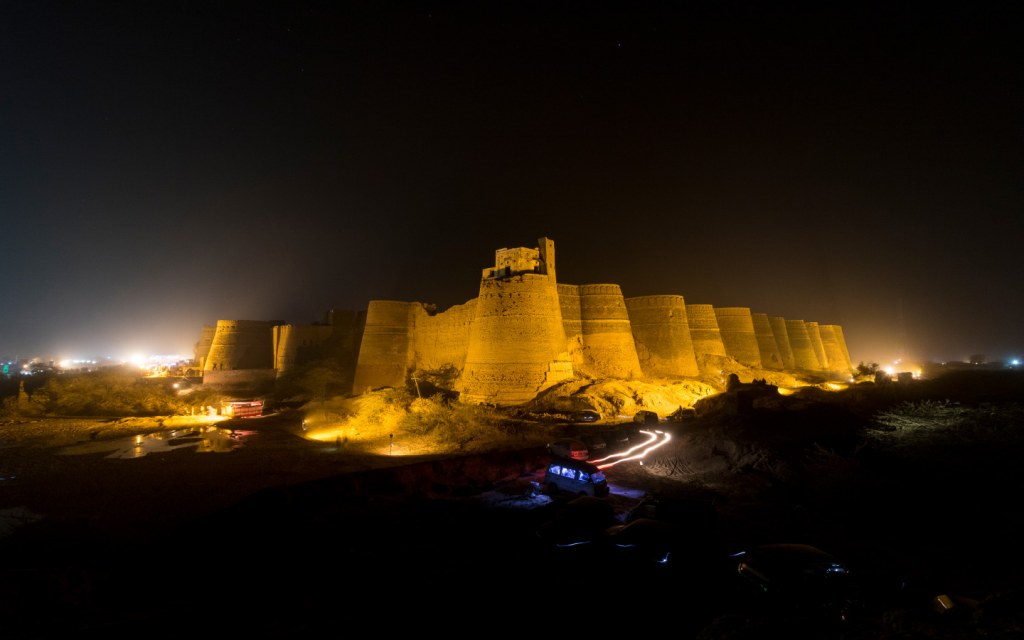
Some say that the name Cholistan is derived from the Turkish word ‘chol’, which means ‘desert’. Meanwhile, others are of the opinion that the name traces its origins to the word ‘cholna’, which means ‘moving’, referring to the nomadic lifestyle of the people living here. Regardless of which story is true, the region holds a lot of history, since it was part of the Indus Valley Civilisation.
The region, now dry, was where the Hakra River, a tributary of the Indus River, used to flow. While the bed of the river is now arid, the soil in the area is quite fertile, which is why greenery can be occasionally seen here. However, the weather in the region remains dry and hot during the day, with very little to no rainfall all year. The nights though are often quite cold due to the desert climate, even during the summer months.
The Local Culture
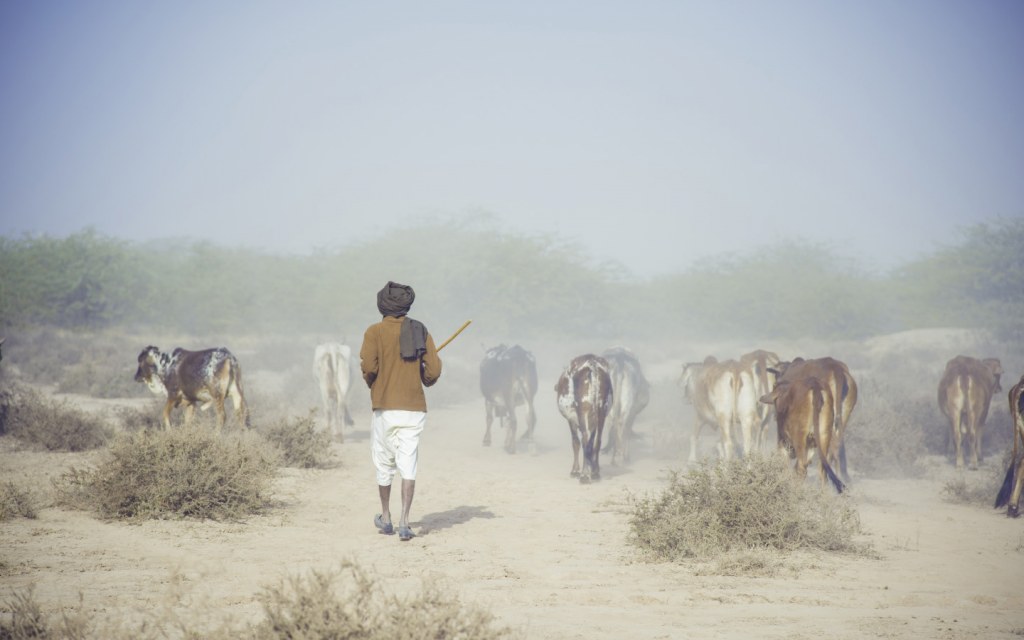
With a population of around 100,000, life in the Cholistan Desert is not easy due to the harsh weather conditions. The locals live like nomads, for the most part, moving from one place to another in search of food and shelter for themselves as well as their herd. Men wear bright turbans while women wear brightly coloured dresses that are a speciality of this region. The colours can include bright reds, shocking pinks, and eye-catching shades of orange, yellow and green.
While livestock remains their main source of income, the people are also fairly skilled in arts and crafts, producing a number of things for sale during the winter months, when it is too cold for them to earn a living as a livestock herder. Some of the most common crafts are textiles, leatherwork, weaving, and pottery.
How to Reach the Cholistan Desert?
Bahawalpur is the nearest city to the Cholistan Desert and it is recommended that travellers head towards it if they wish to visit the desert. Buses and private tours are operational from there, which will bring you to the dunes. The best time to visit the Cholistan Desert is during the spring and autumn seasons, as summers and winters make the weather harsher to bear.
Places to Visit in the Cholistan Desert
Once you arrive at the desert, here’s what to see to make your trip to the Cholistan Desert worth it:
Derawar Fort
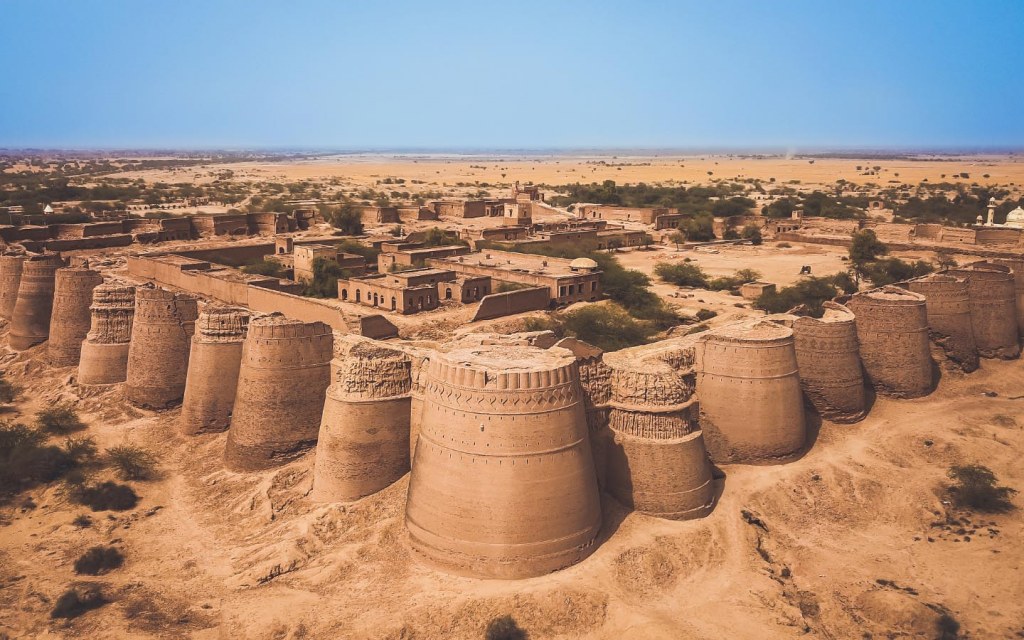
The most iconic landmark of the Cholistan Desert is Derawar Fort, which used to be the home of the Nawab of Bahawalpur in earlier times. Forty circular fortifications protect the fort’s interior, aligned ten on each side, at the height of around 30 feet. It is a marvel of architecture and a must-visit on your trip to the Cholistan Desert.
Built by the Rajput ruler, Rai Jajja Bhatti in the 9th century, the fort was known as Dera Rawal in honour of the Rajput king Rawal Deoraj Bhatti. The name later changed to Dera Rawar, which over time was shortened to its current name, Derawar. The Muslim Nawabs took over the fort in the 18th century, and Abbasi rulers later renovated it. Watching the sun going down against this marvellous structure rising out of the desert is an experience that should not be missed on your trip to the Cholistan Desert.
Abbasi Mosque
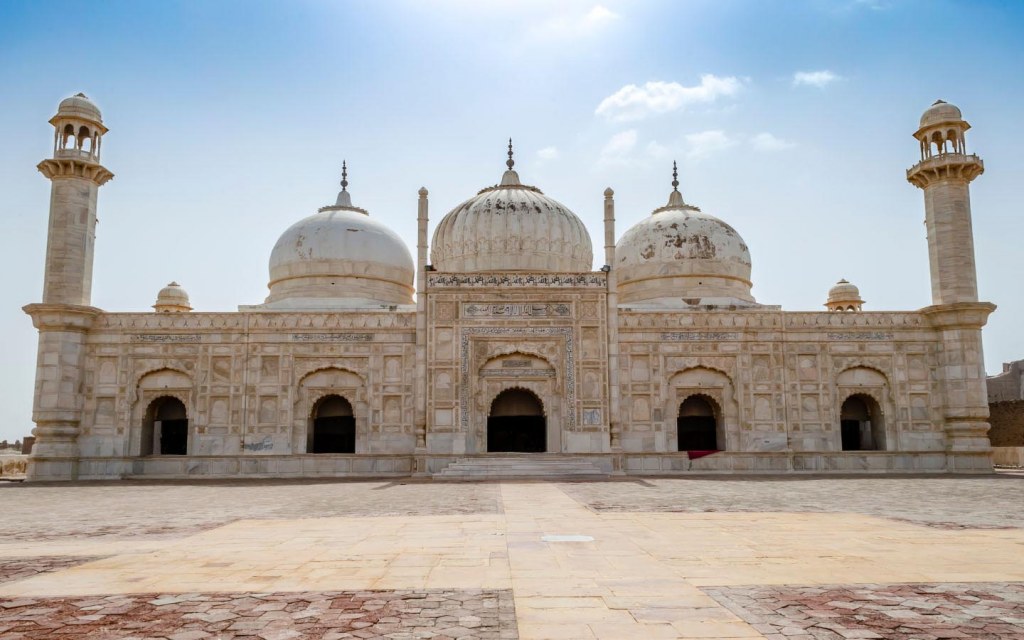
Made out of marble to replicate the Moti Masjid in Delhi’s Red Fort, the mosque is reasonably well maintained. It is at a walking distance from the Derawar Fort. Nawab Bahawal Khan built it in 1849 and it is one of the top places to visit in the Cholistan Desert.
Chanan Pir
Chanan Pir is a small village at the start of the Cholistan Desert, located between the Din Garh and Derawar forts. The village is named after the Sufi saint who is buried here. The place holds great significance for Muslims and Hindus alike. An Urs is held annually in March at the shrine within the village and devotees from all over come to pay their respects to Chanan Pir.
Uch Sharif
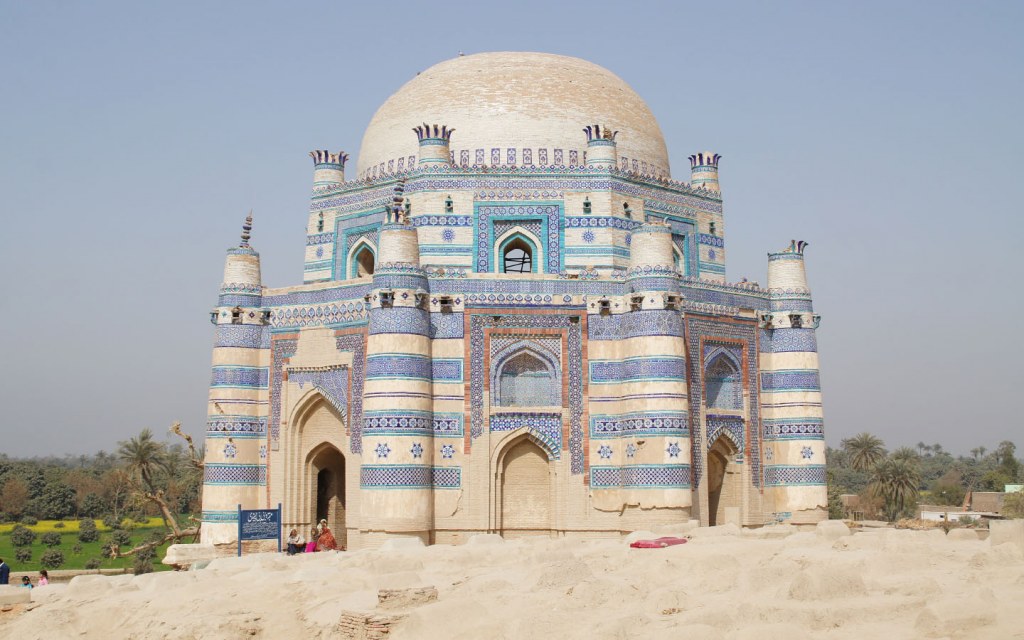
Around 75 kilometres from Bahawalpur, there is another site that holds religious significance. It is the ancient town of Uch Sharif, where several Sufi saints and mystics are buried. Since the village has survived several invasions over time, some of the religious sights are in ruins. The tomb of Bibi Jawindi, however, is still intact and is beautifully constructed with glazed tiles, terracotta trimmings, and structural brickwork. It dates back to 1493.
Other famous shrines include those of Hazrat Jalaluddin Surkh Bukhari and Hazrat Bahawal Haleem. Mosques having amazing architecture here include the Mosque of Mahboob Subhani and the Mosque of Makhdoom Jahanian, built in the late 1300s.
Ruins of Other Forts
While Derawar Fort is the only fort still standing, the region was originally home to more than ten different forts. Ruins of these can be found within the desert sands if you know where to look. A local guide would be your best bet for finding them.
Things to Do in the Cholistan Desert
Here are some of the top things to do in the Cholistan Desert once you arrive:
Attend the Jeep Rally
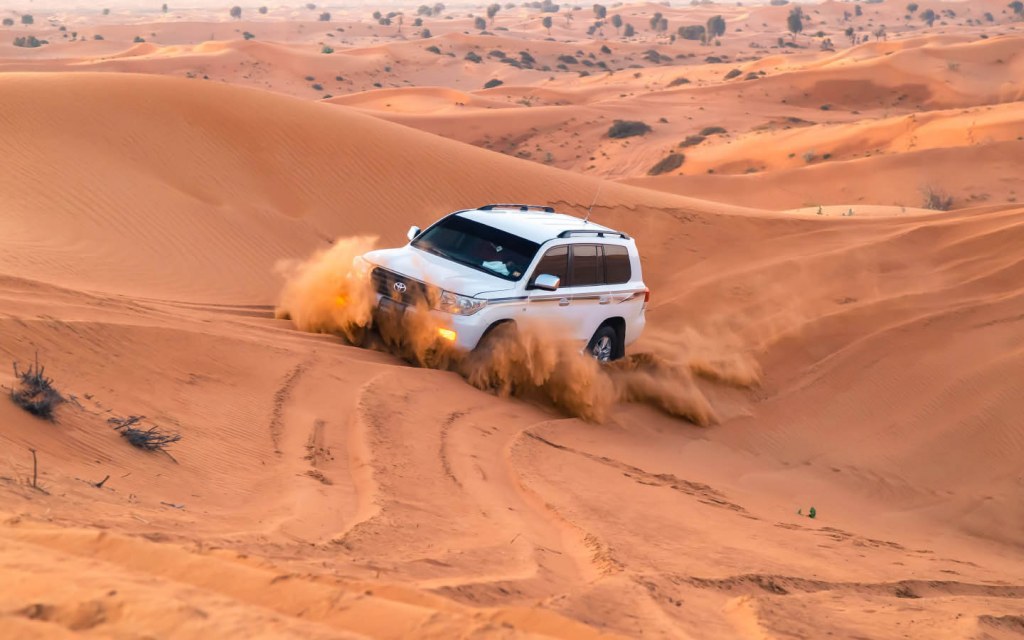
The Cholistan Desert plays host to an annual Jeep Rally which has gained international fame over the years. It is also one of the biggest motorsports events in Pakistan. The rally is held near the Derawar Fort in February every year and more than 100 drivers take part in the event with their modified cars. Visit the Cholistan Desert in the second week of February 2020 as the event is scheduled to begin on the 13th of the month.
Camping in the Desert
Since there is no proper settlement in the Cholistan Desert, tourists will have to rough it. Not to worry though as the guides come fully prepared with camping tents and other equipment. Some tour packages also offer a fireworks show as you sit around the campfire. Nights in the desert can be quite cold though, so make sure you take a few extra layers along. You’ll need them!
Camel Safari
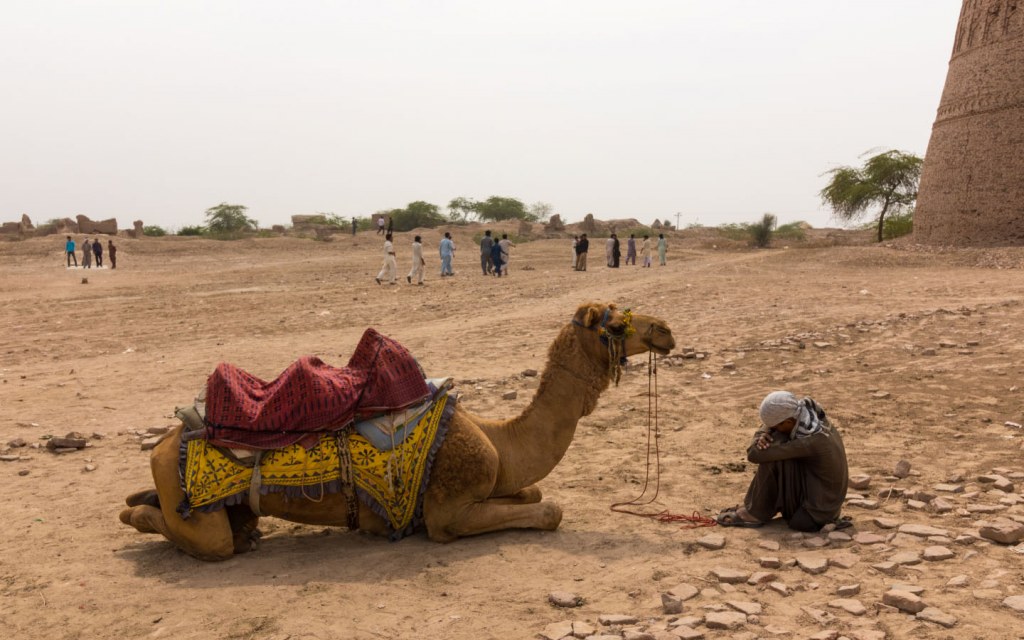
You’ve ridden a camel, but did not like it, and think this activity is not worth your time. Guess again! You haven’t truly ridden a camel until it’s taking you over the dunes and giving you a high view of the surrounding desert in all its magnificence. Moreover, due to a lack of proper roads, most tours will use camels to take you closer to Derawar Fort in the midst of the Cholistan Desert.
Shop for Local Goods
As the people of Cholistan are skilled artisans, there are a number of souvenirs that you can take back with you to remind you of your travels to the region. Some of the most famous products are woollen carpets, rugs, blankets, and other textile goods such as Khaddar fabric, ghaagras, ajrak, and chunri dupattas. You can also buy amazing pottery made by the locals, including pitchers, bowls, glasses, and more. Since the locals are also experts at leatherwork, embroidered khussa can also be found on sale here.
We hope we’ve made you eager to take a trip to the Cholistan Desert. Start planning your visit now, and we hope you have a ball there! If you want to explore other unique tourist spots in Pakistan, the Khewra Mines in upper Punjab are also an option you can consider.
Stay tuned to Zameen Blog for more tourism posts. We can be reached at blog@zameen.com for all your queries and suggestions.



